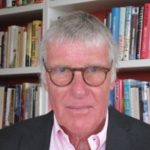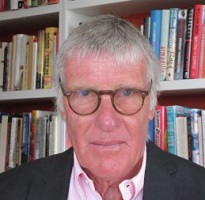
Twice in the last century, the United States enjoyed a position of unrivalled power. The first moment occurred at the end of the Second World War and turned out to be brief. Not long after Hiroshima, the Soviet Union acquired its own nuclear capability, allowing it to assume a role as a global challenger to the US for the next four decades. The rivalry played out around a starkly divided bipolar world.
The second period of American dominance followed the fall of the Berlin Wall and the collapse of the Soviet empire. The breakup of the USSR left the US again alone at the top. For a decade the US led an effort to vitalize multilateral institutions. Following the al-Qaeda attacks of September 11, 2001, the second Bush administration embarked on a decade of thinly veiled American unilateralism, featuring conventional wars in Afghanistan and Iraq, with darker, more secret ones elsewhere.
Al-Qaeda’s murderous ideology delivered a devastating psychological blow to America, though it was never a threat to its existence. The patriotic imperative of defeating a new enemy abruptly shifted American conduct away from any pretense of building multilateral institutions. The so-called War on Terror and specifically the invasion of Iraq were designed to demonstrate to all that US power, prominence and resolve were undiminished and unassailable. The price to the US of this demonstration war was harsh: thousands of soldiers dead, tens of thousands left with lifelong disabilities and over US$1 trillion spent.
Nor did it leave America as the unassailable global power. The wars did not result in clear American victories on the battlefield. Rather, they resulted in messy stalemates and withdrawals that could not hide the trouble the world’s largest military had in subduing irregular and ideological opponents armed with crude weapons. The American brand was damaged by the bullying and incompetence of the Bush administration that resulted in Guantanamo and Abu Ghraib — among other controversies — becoming bywords for the inability to reconcile security with civil liberties. The cost to US global influence was enormous: a surge of anti-Americanism around the world and a battered reputation that was further stoked by the 2008 collapse of the US financial system. That perception of decline, even among Americans, contributed to the presidential run by Barack Obama, who was originally elected on the hope that he would get the US out of wars abroad and fix the problems at home.
The President’s record is mixed. He stuck to his predecessor’s tight schedule to leave Iraq. And in Afghanistan, after acquiescing at first to his military commanders’ demand to beef up the fight, Obama cannot now get to the exits fast enough. The American public has such faint taste for any further military engagement abroad — or even proactive diplomatic engagement — that the administration has largely been a bystander as the Middle East violently remakes itself. At home, Obama’s efforts to revive the economy have produced only a soft recovery that has yet to create the needed jobs in the US, let alone lead the world economy back to health.
Meanwhile, across the Pacific a new power has risen. China’s economic ascent has been swift. The Chinese are buying companies and resources worldwide. Already the principal investor across Asia, China is also a huge trade and investment presence in the Middle East, South America and Africa, as it pursues a relentless hunt for resources and markets and also buys assets at firesale prices in an economically comatose Europe. The global economy now relies heavily on Chinese economic growth, which even at a ”slow” 7.5 percent rate will add more than half a trillion US dollars of global consumption and demand to global GDP this year.
The extent of China-US ties puts their bilateral economic relationship in a league of its own. That China holds over $1 trillion in US Treasury securities is often cited to show US vulnerability to Chinese influence. The larger fact is that the US and Chinese economies are mutually dependent. The US replaced the European Union this year as China’s biggest trading partner. And while the US economy is still twice the size of China’s, China is now a bigger trading nation. US imports from China are running far ahead of its exports going in the other direction, though the Chinese continue to seek American technology.
This Chinese economic might is accompanied by increasing military-security muscle, especially in the Asia-Pacific region, which has long been dominated by the US military. China knows that only by strengthening its military can it counter American dominance of the Pacific, which the US has held since the 1945 signature of Japanese surrender on board the USS Missouri in Tokyo Bay. The Pacific theatre is host to 60 percent of US naval and air assets, and with the Obama administration emphasizing a ”pivot” to Asia, China worries that it has become the target of a new containment strategy.
China’s tensions are not just with the Americans. It is engaged in territorial disputes with Japan and its Southeast Asian neighbours over small but potentially valuable islands. It continues to have bedrock sovereignty issues over the nationalist aspirations of Taiwan and Tibet. These disputes have led China’s neighbours to encourage deeper US engagement in the region to act as a counterweight to Chinese power. Defense Secretary Chuck Hagel is now updating long-standing defence partnerships with countries such as South Korea, Japan, the Philippines, Indonesia and Singapore. At a recent security conference in Singapore marked by expressions of distrust of China by defence officials from other Asian nations, Hagel recited US complaints about Chinese cyberattacks and described measures the US was taking to maintain its edge in military technologies.
The result is a competition that brings an end to this second interregnum of US supremacy. For almost every American interest around the globe there is a corresponding, and often competing, Chinese one. Once again, the unipolar world has proved fleeting. We are now living in a G2 world.
For almost every American interest around the globe there is a corresponding, and often competing, Chinese one.
The recent meeting of Chinese and American leaders in Rancho Mirage, California, underscores the degree to which the future hinges on the relationship between these two powers. Xi Jinping assumed the presidency of China in March, complementing his position as secretary-general of the Communist Party, and Obama was eager to make a personal connection to the man who will in all likelihood be in power for a decade. The White House reading of Xi was that he is a new kind of Chinese leader, pragmatic, curious about others, a self-confident communicator and leader, quite unlike his predecessor, the wooden Hu Jintao, who never agreed to meet Obama one-on-one and who spoke only from precooked talking points. Xi spoke generally at Sunnylands of a “new model of great-power relationship” that would enable “our two nations to join together to promote peace and development in the world.”
The summit was held, fittingly, behind the walls of Sunnylands, the 200-acre, 11-lake estate once owned by the late Walter Annenberg, creator of TV Guide and American Bandstand. The desert playground around Rancho Mirage and Palm Springs is where Hollywood royalty once burned their weekend days away, safe from public eyes and prying paparazzi. Sunnylands, situated just past the corner of Bob Hope and Frank Sinatra Drives, has long been a refuge, first for those movie stars and more recently for presidents. Now run by a foundation, it suited Obama’s idea of a setting where he and Xi could get to know each other and hopefully build a relationship of trust.
Though the summit was not aimed at “deliverables,” some progress appeared to have been made on the shared interest in stymying North Korea’s nuclear ambitions. And Obama and Xi did agree on a significant climate change initiative to wind down the production and use of hydrofluorocarbons.
But there is no issue that raises questions of trust between the two nations more than cyberspying. Obama arrived armed with documented claims of Chinese theft of American intellectual property. US corporations in China are routinely victims of extensive industrial espionage, but Chinese cyberpenetration extends to US military assets, according to new US government reports made public in the past few months. A US Department of Defense report detailed how Chinese hackers with military ties accessed design specifications of US advanced weapons systems — missiles, aircraft such as the F-35 joint strike fighter and ships. One US expert claims the Chinese have obtained 25 years of shortcuts in advanced military R&D.
The Sunnylands meeting was supposed to be the place where Americans, long content to grumble privately about Chinese cyberintrusions, would push back more overtly and pointedly. But the sting in that message was undermined on the eve of the summit by the revelations of Edward Snowden, the self-styled transparency guerilla and whistleblower whose exposure of extensive and secret American information gathering gave the Chinese a protective wall to stand behind. American pressure has been blunted by the drip of Snowden’s claims, including his assertions to Chinese media that the US National Security Agency has bugged Chinese cellphones and attacked computer servers at the prestigious Tsinghua University.
The decision by Hong Kong authorities to allow Snowden to leave its jurisdiction rather than be extradited to the United States may have just been a Chinese tweaking of the Obama administration’s discomfort. But it also underscores the inevitability of collisions between Chinese and American interests. It is another sign that the US can no longer impose its will, even in cases where it sees a vital national interest at stake.
What are the hopes, then, of engaging the Chinese in consultation and joint decisions on global issues within a G2? Thirty years ago, leading China out of economic darkness, Deng Xiaoping bade his countrymen ”hide its capacities and bide its time.” Has that time come? Will China now accept a primary role in global cooperative management? Or are we heading toward another bi-polar confrontation between superrivals, extending beyond economic competition to the military sphere?
Howard Balloch was Canada’s ambassador in Beijing for six years, until 2001, and he stayed in Beijing to start and run a merchant banking firm. He doubts China has decided it can handle a full G2 right now, without a fully convertible currency and with a still immature financial sector. But he expects China would welcome a partial G2 that would recognize China’s interests and role in Asia, which from a Chinese perspective extends to the Middle East.
But will those ambitions expand? Balloch sees the inflection point as coming in the autumn of 2017, when the last politburo members representing the old conservative order will be forced into retirement. Then, with the appointment of a few younger leaders of Xi’s choosing — some of whom were educated in the West and have already been elevated this past year to the penultimate ring of power — the inner councils will not include a single member of the Hu generation.
The question is how this emerging generation sees China’s place in the world. Does it seek rivalry or cooperation? Does it aspire to assume its place as a leader in the global system or to remake it? These are among the defining questions of our time. And they will heavily determine the fate of smaller nations, from those on the Chinese periphery to ones like Canada, long in the American orbit, which are now wondering about how to find comfort and security in a G2 world.
Photo: CP Photo









